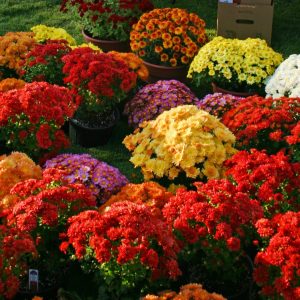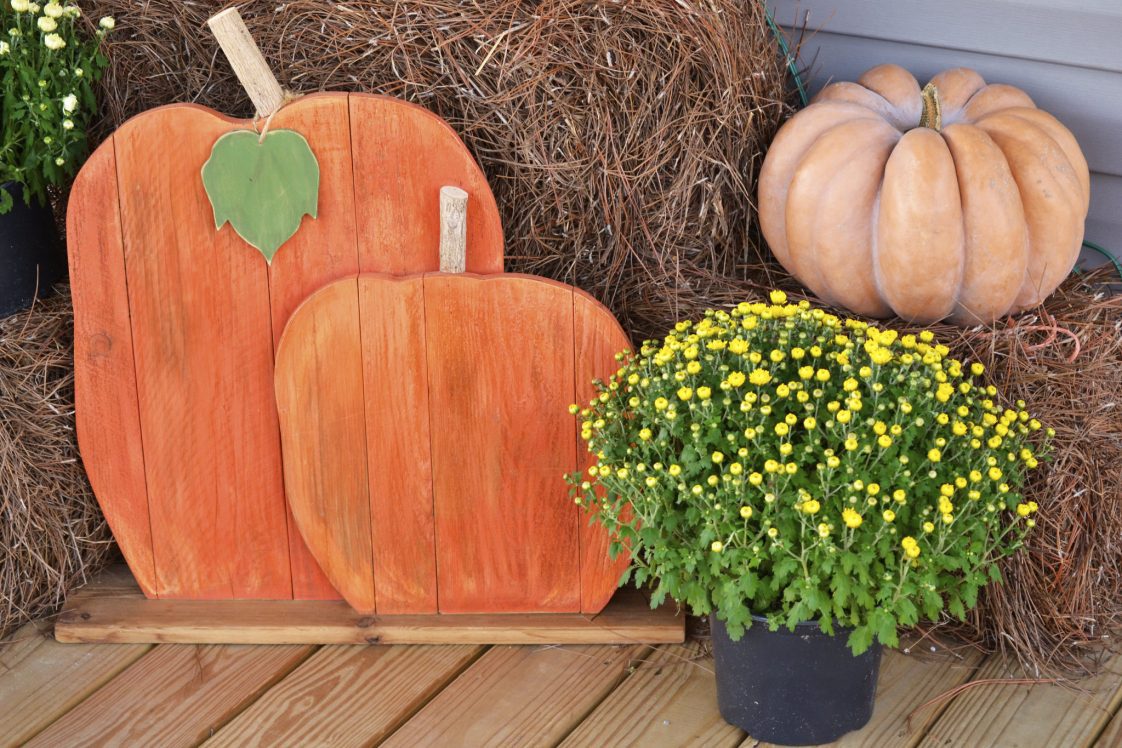Lawn & Garden

AUBURN UNIVERSITY, Ala. – Many people associate garden chrysanthemums, or mums, with the beginning of autumn. These floral features are already occupying garden centers and front porches around the country. There are tips and tricks to make sure that every mum has maximum longevity. Lucy Edwards, an Alabama Cooperative Extension System county coordinator, said everyone can have thriving mums, but long-term success depends on several factors.
Chrysanthemum Basics
One of the most popular fall plants, mums provide great pops of color to homes and gardens. However, much like a tomato plant, they seemingly find any excuse to prematurely wither away. Edwards, who is the Chilton County Extension coordinator, said everyone needs to understand the basics of caring for mums in order to be successful.
“There are two main categories of mums: floral and garden,” Edwards said. “Floral mums are those that typically are not grown outside and sold by florists for arrangements. Garden mums are those that people see in garden centers during the fall.”
The two most common types are daisy mums and decorative flower mums. Popular colors of this species include white, bronze, yellow, red, coral, pink, lavender and red. Edwards said mums grow well in Alabama if done properly.
To put it plainly, mums require moist, well-draining soil combined with 6 hours or more of daily sunlight. Edwards said planting depth is also a factor.
“Plant your mums at the same depth as the size of their original containers,” she said. “It’s better to plant too shallow than too deep.”
A commonly forgotten practice with mums is dividing its shoots. By pinching new growth, this prevents long, spindly blooms and allows for more blooms across the entire plant. Deadheading spent flowers also aids in maintaining their appearance through the fall.
Choosing the Best Mum
Choosing the best mum is one of the most important aspects of care. Edwards said there are a couple of characteristics to look for when choosing the right plant at a garden center.
- Buy mums with primarily unopened blooms. When buying a mum, it can be tempting to grab the largest, fully blooming plant. Make sure to buy the mums with their blooms not quite open. This choice will allow for a longer bloom time once you get it home.
- Always check a chrysanthemum for insects and diseases. Nobody wants a sick plant. Be on the lookout for powdery mildew in mums. Fungal infection occurs quickly on dry plant surfaces at mild temperatures and at a relative humidity of at least 95%. The characteristic cottony patches are usually seen within a few days after infection. To control mildew, remove all infected leaves and treat the mum with an appropriately labeled fungicide.
Water is Imperative 
Mums rely heavily on adequate watering, especially in dry or hot conditions. Edwards said this is the most common mistake when growing mums.
“It is easy to assume the plant is fine,” Edwards said. “Too often, cooler temperatures lead us to neglect the task of watering – especially if we have had a few afternoon rain showers. Before we realize it, there is a dead plant on the front porch.”
To remedy a dry soil, daily measurements of soil moisture should be a routine. Feel the soil each morning to the depth of 1 inch, and if the soil is moist, wait 24 hours and measure it again. If it feels dry, be sure to soak the soil well.
Some people may have a difficult time regularly measuring water retention. In this case, plant mums in a container that has a reservoir at the bottom. A saucer can also be added to collect water. These provisions can help extend watering intervals.
More Information
Mums are an autumn staple for many decorators and horticultural enthusiasts. Be sure to share these tips with neighbors, friends and family to ensure that everyone’s porches and landscapes remain colorful. Lastly, consider a mass planting of one mum color for a landscape statement that is sure to have the neighborhood talking.
For more information about mums and other seasonal plants, visit the Alabama Extension website at www.aces.edu.

